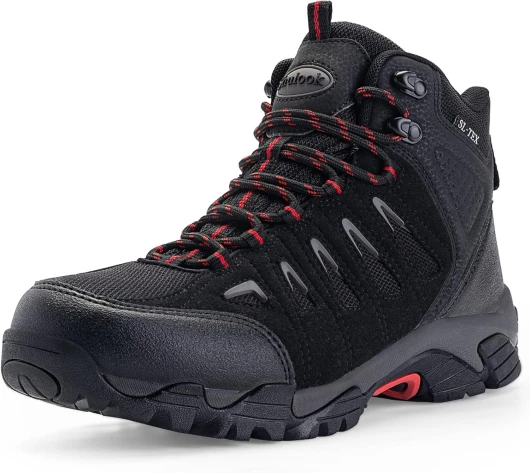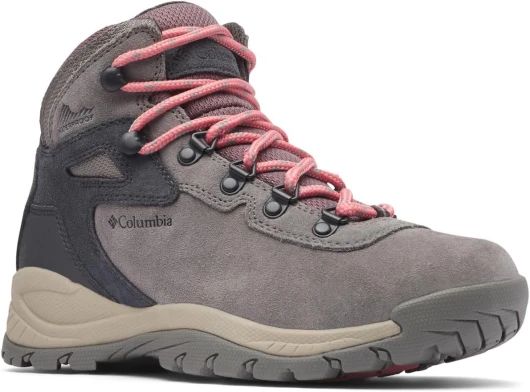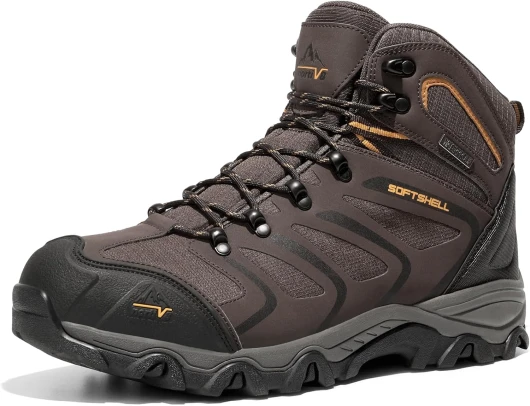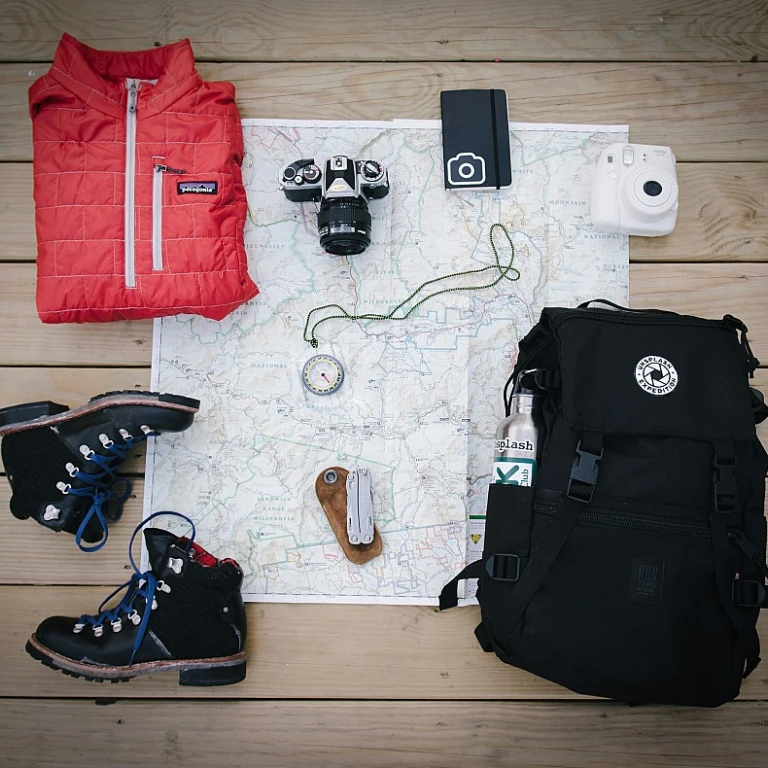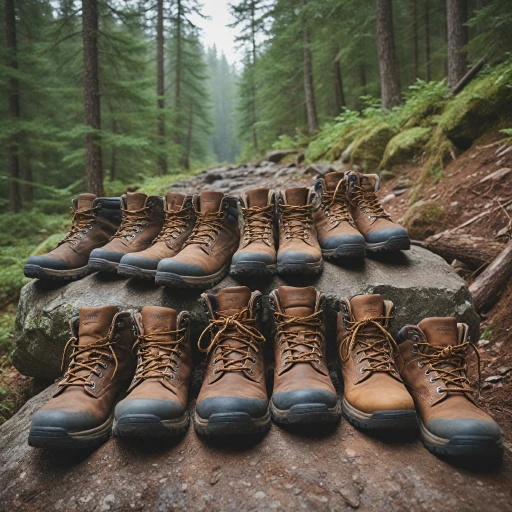
Understanding Ankle Support
Exploring the Foundation of Ankle Stability in Hiking Boots
When hitting the trail, one must not underestimate the fundamental role of ankle support in hiking boots. This feature is a protective measure against potential ankle injuries, including painful sprained ankles that can significantly dampen a hiking adventure. Understanding the mechanics of how support stabilizes the ankle can help hikers shop for the best boots that cater to both safety and comfort. Hiking enthusiasts often weigh the benefits of ankle braces or compression tools like compression sleeves and socks for added security. These supplements work in tandem with high top hiking boots, which offer brace-like stability to guard against ankle sprains and reduce strain on the achilles tendon. A pivot point in ankle support is how it complements diverse trails, offering protection from the unpredictable nature of terrains, as further explored here. This confluence of design and functionality ensures that whether you're on a rocky mountainside or a peaceful forest path, your ankles remain shielded from undue stress. By grasping the importance of robust ankle support, hikers can make informed decisions about footwear that address critical injury prevention and enhance foot health, particularly for ailments like plantar fasciitis. Equipped with the right boots, every hike can be a step towards exhilaration, rather than foot pain.Materials and Design Features
Key Materials and Design Features for Optimum Ankle Support
When venturing into the rugged outdoors, the significance of good ankle support in hiking boots cannot be overstated. The materials used and the design features incorporated into these boots are crucial in preventing ankle injuries and ensuring comfort. Modern hiking boots are crafted using a combination of synthetic fabrics, leather, and sometimes Gore-Tex linings. These materials are chosen not just for their durability, but also for their role in providing compression and stability to your ankles.- Leather and Synthetic Uppers: One of the best materials for ankle support, leather provides a durable, weather-resistant layer that molds to the foot over time. Synthetic options, often lighter, offer flexibility without compromising on support.
- Midsole Support: The construction of the midsole is pivotal. Materials such as EVA (ethylene vinyl acetate) and polyurethane are common, each providing varying levels of cushioning and ankle brace-like support.
- High Top Design: Boots with a high top cut enhance ankle stability by enveloping the ankle joint, reducing the risk of sprains. These can be particularly beneficial on trails that demand a bit more from your ankles.
- Lacing Systems: An effective lacing system ensures a snug fit, further contributing to ankle stability. Techniques such as "lace ankle" methods can optimize the support provided by your boots.
Comparing Ankle Support Across Brands
Different Brands, Different Strengths: Examining Ankle Support
When it comes to ankle support in hiking boots, not all brands are created equal. The design, materials, and features used can significantly affect the level of support a boot offers, which is crucial in preventing ankle injuries such as sprained ankles or damage to the Achilles tendon.Brand Overviews:
- Premium Brands often incorporate ankle stabilizers and high tops in their designs. These features can increase the overall support and stability, which is vital for hikers traversing challenging terrains.
- Affordable Options might offer a good balance between price and support, prioritizing essential features like compression fittings and reinforced ankles to minimize pain and injuries.
- Performance Brands may utilize innovative materials such as compression sleeves and braces combined with unique lace designs for added ankle protection. They're ideal for trail runners who face varied terrains.
Material Matters: The choice of material plays a pivotal role in the boot's supportive capabilities. Many top-tier hiking boots make use of durable yet flexible materials that combine well with underlying support systems like an ankle brace or boot braces, enhancing the overall ankle stability. Compression materials are often favored in hiking boots to add that snug fit, acting much like a compression sock, thereby providing an extra cushion against plantar fasciitis or ankle sprains.
While browsing for hiking boots, the quick view might tempt you to focus on aesthetics or immediate comfort. However, it's essential to prioritize features that work in tandem to prevent foot injuries.
If you're on a shopping spree, remember that several retailers offer free delivery, making it more convenient to compare several pairs from the comfort of your home. For those seeking more insights into enhancing their trekking experiences, it's worthwhile checking resources on enhance your hunting experience.
Ultimately, the best ankle support for you will depend on your specific hiking needs, the trails you frequent, and your personal preferences regarding boot fit and feel.
Ankle Support for Different Terrains
Evaluating Ankle Support for Varying Trails
Choosing the best ankle support for your hiking boots requires an understanding of the different terrains you might encounter. The right level of ankle support can significantly reduce the risk of ankle injury, including sprains and injuries to the Achilles tendon. It's important to think about how the terrain impacts the ankle and adjust your hiking footwear accordingly.
Trail conditions can vary widely, from rocky inclines to smooth pathways, each presenting unique challenges to your ankles. For rocky or uneven trails, sturdy hiking boots with adequate ankle braces or a lace ankle design can prevent sprained ankles and address pain associated with plantar fasciitis or other foot conditions.
- Rocky terrains: Consider high-top boots that offer full ankle brace support. These provide stability while preventing injuries.
- Smooth trails: A lower cut that allows more flexibility might be suitable but ensure sufficient compression to maintain some ankle stability.
Additionally, using compression socks and sleeves can supplement your boot's support by improving circulation and reducing swelling or discomfort. Products like these can be beneficial, especially when transitioning between different trail types, which is where varied compression and flexibility become crucial.
For those on rugged paths, investing in quality ankle braces or stabilizers, even those priced on the higher end, might be wise. While keeping an eye on the price, remember that compromising on support could lead to costly injuries in the long run.
As you navigate different terrains, safety should remain a concern. Evaluating trail difficulty against your equipment can make all the difference in enhancing your hiking adventure.
Balancing Ankle Support with Flexibility
Finding the Right Balance Between Support and Flexibility
When it comes to hiking boots, achieving the perfect balance between ankle support and flexibility is crucial. While robust ankle support is essential to prevent injuries such as sprained ankles and to provide stability on uneven trails, too much rigidity can lead to discomfort and restrict natural foot movement. This balance is particularly important for those who suffer from conditions like plantar fasciitis or Achilles tendon issues, where both support and comfort are necessary.
Hiking boots with high tops often offer excellent ankle support, acting like an ankle brace to stabilize the foot. However, they can sometimes feel restrictive, especially on longer hikes. On the other hand, trail runners and low-cut hiking shoes provide more flexibility but may lack the necessary support for challenging terrains. It's essential to consider the type of terrain you'll be tackling and your personal comfort preferences when choosing the best ankle support for your needs.
For those who require additional support, incorporating ankle braces or compression sleeves can be beneficial. These accessories provide extra stability and can help prevent ankle injuries without compromising the flexibility of your boots. Compression socks are another option, offering support and reducing the risk of foot pain during extended hikes.
Ultimately, the best approach is to try on different styles and brands, considering factors such as the price and specific design features that cater to your hiking needs. Many shops offer free delivery and easy returns, allowing you to test various options before committing. Remember, the goal is to find a pair of boots that provide enough support to prevent injuries while still allowing for natural movement on the trail.
Expert Tips for Enhancing Ankle Support
Enhancing Ankle Support: Expert Advice
When it comes to enhancing ankle support, a proactive approach can make all the difference on the trail. Whether you're dealing with existing ankle injuries or aiming to prevent new ones, here are expert tips to optimize your hiking experience:
- Incorporate Ankle Braces and Stabilizers: To prevent further ankle injuries and provide additional support, consider using ankle braces or stabilizers. These tools are particularly beneficial if you have a history of sprained ankle or plantar fasciitis.
- Utilize Compression Gear: The use of compression socks or sleeves can aid in enhancing circulation and reducing swelling, providing crucial support for longer hikes. Compression can be beneficial in preventing pain related to overuse or existing foot conditions.
- Choose the Right Boot Type: A high top boot design can offer superior support compared to trail runners. Look for boots with ample cushioning and a snug fit around the ankles to minimize the risk of injury.
- Master the Art of Lacing: Properly lacing up your hiking boots is essential, as it impacts how well your ankles are supported. Consider methods like loop lacing or lace ankle techniques to ensure a secure fit.
- Balance with Flexibility: While prioritizing ankle stability, don't overlook the importance of flexibility. Hiking boots that provide a balance between rigid ankle support and flexibility can help you navigate varied terrains with ease.
- Test Gear Before Committing: Before your big hiking adventure, take the time to shop for various options and test them to understand what the best ankle support feels like. Most retailers offer free delivery and hassle-free return policies, which allow you to try multiple options at home.
By considering both the materials used and the terrain you'll encounter, these expert tips can significantly improve your comfort and performance during hikes. Investing in the right combination of boots and accessories can prevent pain and protect against potential injuries, ensuring you enjoy every step of your next adventure.


